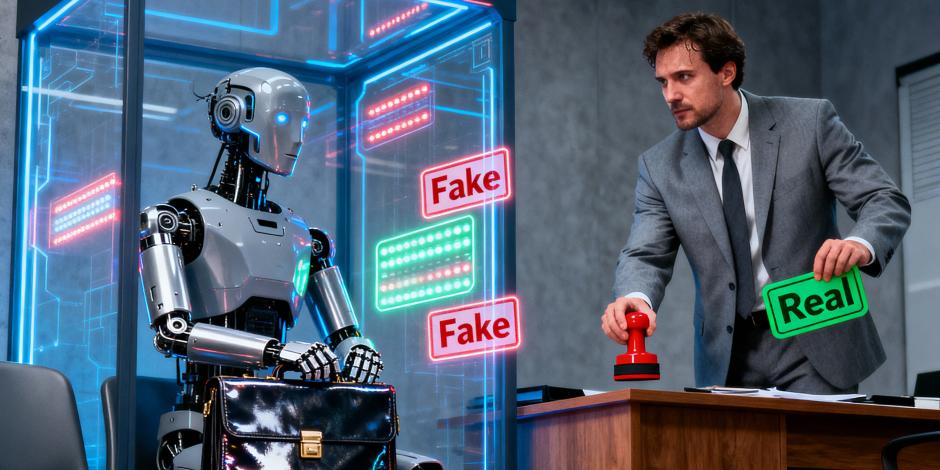Many employees use artificial intelligence (AI) to save time at work. However, for those in human resources (HR), AI can have the opposite effect. Globally, more and more AI bots are apply for sth.sich um etw. bewerbenapplying for jobs, leaving recruiters to sort through sth.etw. durchsehensort through thousands of applicationBewerbungapplications and try to work sth. outetw. herausfinden, verstehenwork out which ones are from real people.
Thanks to public access to generative AI, the research company Gartner predict sth.etw. voraussagenpredicts that, by 2028, a quarter of all job candidates will be fake. Some are simply fake electronic applications, but in others cases, AI bots are extremely realistic and can be hard to spot sth.etw. erkennenspot, even on video calls. And, of course, many real people are using AI. Career Group, a recruitment agencyAgenturagency, says 65 per cent of job applicantBewerber(in)applicants write their cover letter (UK)Anschreibencover letters with AI. How are HR professionals supposed to identify the best candidates?
There have even been cases of companies actually hiring AI bots. Dave Vu, a recruitment agentVermittler(in)agent in Ontario, Canada, for example, wrote on LinkedIn about a company that had unknowingly hired a bot: “It ‘worked’ there for three weeks before anyone realized it wasn’t human.”
People-focused
Silke Siems, HR director at the German energy company E.ON Digital Technology (EDT), says she’s seen an increase in the number of applications. “We don’t know if these are AI-generated, we just know it’s a lot,” she told Business Spotlight. According to the tech company IBM, 42 per cent of employers in the US are using AI toolhier: Programm, Anwendung; Hilfsmitteltools to screen sth.hier: etw. filtern, sichtenscreen applications, looking for the fake ones. The software isn’t failsafehier: absolut zuverlässigfailsafe, however. The BBC reported, in 2024, that the tools may be inaccurately screening applications and eliminate sb./sth.hier: jmdn./etw. aussortiereneliminating some of the best candidates.
At EDT, HR processes remain very human. “We don’t use any software,” explains Siems. “Every CV (curriculum vitae)LebenslaufCV needs to be screened, but of course, very quickly.” To reduce the flood of applications, EDT limits how long job postingStellenausschreibungjob postings stay online. “It’s often a week or five days only. Then, we need to take it offline because we have too many applications, and it’s not manageable for the recruiter.”
Spot the bots
In interviewhier: Bewerbungsgesprächinterviews, HR professionals have techniques to find out if candidates on video calls are real or fake. Siems says recruiters ask candidates to wave (one’s hand)winkenwave their hands in front of the camera at certain moments or they notice if responses to questions takehier: dauerntake too long. “in the endhier: im Endeffekt, letztendlichIn the end, you can really only tell sth.hier: etw. feststellen, sehentell if you meet them,” she says. “We’ve integrated a new step in our interview process: check the ID cardPersonalausweisID card and then meet that person in one of our offices so that one of us (hiring managers or recruiters or even somebody who’s there in the office) can say this is a real person and that the ID card matches that person. Now, an in-personpersönlichin-person interview is always part of the process.”
AI has made work easier for job applicants but harder for recruiters. “It is time-consuming,” Siems says.
Neugierig auf mehr?
Dann nutzen Sie die Möglichkeit und stellen Sie sich Ihr optimales Abo ganz nach Ihren Wünschen zusammen.



